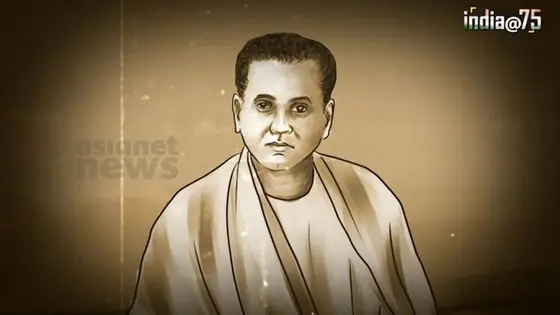
India@75: Abani Thakur, the Father of Indian Modern Art
Abanindranath Tagore or Abani Thakur (1871-1951) personifies this new national consciousness that arose in the field of art.
Indian nationalism draws its strength from diversity and pluralism. India’s resistance movement against colonialism was created by the new self-awareness that arose in all fields of life. The new awakening was visible in politics, literature, and arts. Abanindranath Tagore or Abani Thakur (1871-1951) personifies this new national consciousness that arose in the field of art.

Member of the illustrious Tagore family that made its indelible mark in politics, education, literature, and arts. Nephew of the great Ravindranath Tagore. Abani is considered the father of Indian Modern Art. He was the first proponent of Swadeshi values in art. The founder of the legendary Bengal School of Art replaced the dominance of the European Style of Art that reigned in India’s art world with the advent of colonialism.
Abani led the rediscovery of India’s great art traditions like the Mughal and Rajput miniature art. He redefined and revived them and drew from Indian epics and Ajanta Cave art.
Abani was born in 1871 in the Tagore ancestral village of Jorashanko. He learned art under the European teachers at the Calcutta Arts School. But after having come across the Mughal miniatures, he started to draw in that style. He illustrated the writings of Ravindranath Tagore. Abani’s pursuit of Indian tradition gained strength with the arrival of the British art teacher E B Havel as the Principal of the Government Art School.
Great admirers of Indian traditions, Havel and Abani and his artist brother Gajendranath Tagore redefined the art teaching and techniques based on Indian traditions. They formed the Indian Society of Oriental Art, also known as The Bengal School of Art. Great artists like Nandalal Bose and Jamini Roy were their followers.
Abani took the initiative to find an Asian artistic tradition by bringing Japanese and Chinese arts into his repertoire. The school attempted to claim and glorify an Indian tradition based on spirituality against the allegedly materialistic Western art concepts.
The Bengal School has a share of critics too. Instead of being truly Indian, the school is accused of spawning an orientalist concept as imagined by the West about India.
Also watch:
India@75: The historic solidarity between Hindus and Muslim in Ayodhya
India@75: Story of Alluri Seetha Rama Raju, the hero of the jungle
India@75: Attingal revolt, the first organized mutiny against British authority in India